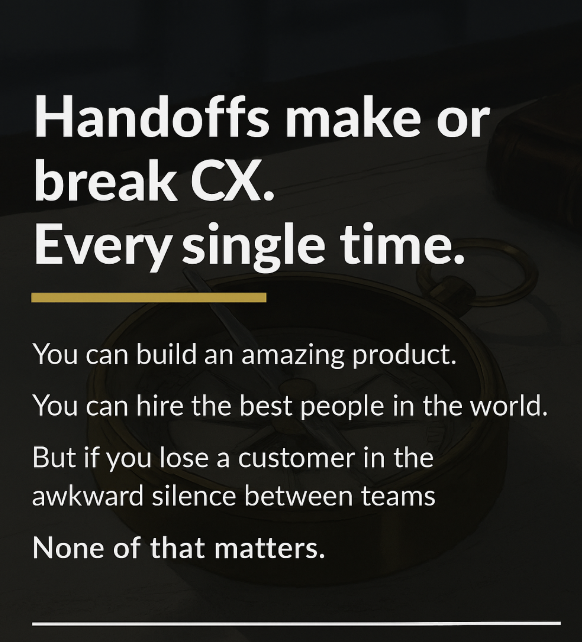If You’re Analyzing Churn, You’re Already Too Late
- Johan Gedde
- May 20
- 2 min read

Why Churn Prevention Starts Long Before Renewal
Let’s be honest: If your churn strategy starts with a spreadsheet, you’re not preventing churn, you’re reporting on it.
And reporting doesn’t retain customers.
🧠 The Real Cause of Churn Isn’t Always in Customer Success
Too many teams treat churn like it’s a CS problem that just shows up at renewal time.
But churn can start long before your Customer Success Manager is even in the picture:
👉 At the first sales demo, when the ICP isn’t aligned
👉 During onboarding, when expectations are unclear
👉 Inside Product, when value isn’t delivered consistently
That’s why churn prevention isn’t just CS. It’s a system that spans Sales, Product, Onboarding, and beyond.
🧯 Churn Isn’t a Monster at Renewal
It’s a Signal You’ve Ignored for Months
Here’s what most teams get wrong:
They treat churn like a monster that suddenly appears at contract renewal. In reality, churn is a series of early warnings, signs that started months ago.
Some of the most common churn signals we track:
⚠️ Missed onboarding milestones
⚠️ Declining product usage
⚠️ An increase in unresolved support tickets
⚠️ No executive sponsor or stakeholder visibility
And yet, quarter after quarter, teams ignore these flashing red lights—until it’s too late.
✅ Here’s How We Attack Churn Before It Attacks Us
Churn prevention isn’t magic, it’s a system. Here’s how we’ve built ours:
1️⃣ Track Milestone Velocity
What it means: We monitor how quickly customers progress through key adoption milestones.
Why it matters: If they’re moving slower than the norm, something’s off. It usually means:
A feature didn’t deliver value
The UI was confusing
Expectations weren’t met
We don’t wait for usage to hit zero. We step in long before with targeted, helpful engagement.
2️⃣ Plug In AI
Why? Because no CS team can watch every customer, every minute.
We feed our AI engine:
Product usage data
Support ticket volume
Milestone activity
Feature engagement trends
The result? AI surfaces early warnings—long before human dashboards catch them.
It’s like radar for customer health. It doesn’t just react. It predicts.
3️⃣ Trigger Human Playbooks at the Right Time
Once AI surfaces a signal, we don’t guess what to do next.
Instead, we trigger the right playbook based on:
The type of signal
The severity
The customer segment
Sometimes it’s a light-touch email. Sometimes it’s a resource hub, a check-in, or a full red-flag escalation.
The point is: we don’t scramble. We act.
🧠 After a Decade in CS, Here’s What I Know:
Retention isn’t about firefighting. It’s not about saving accounts at the 11th hour.It’s about engineering a system that runs on:
Visibility
Signals
Early action
And human judgment when it matters most
Again and again.
💬 Let’s Compare Notes
How are you spotting churn before it becomes a problem?
Reply, comment, or connect. I’d love to hear how you’re building systems that prevent churn instead of chasing it.
✅ Follow me on LinkedIn for weekly execution-first CS strategy





Comments